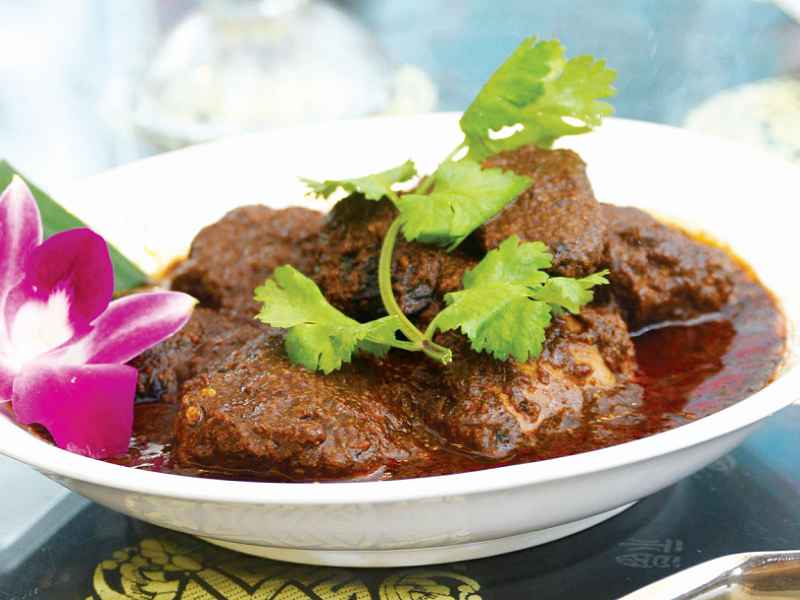Miss Me When I’m Gone: Heritage Peranakan Recipes
by Qian Leung
@ 07 Sep 2018

In the 1600s, in search of better prospects, men from the southern parts of China settled in the straits of Penang, Malacca, and Singapore. The offspring of their marriages with Javanese women came to be known as Peranakans.
“Peranakans don’t like to reveal their recipes,” says Chef Raymond Khoo, 54, of
The Peranakan. Towards an imaginary child, he mimics his great-grandmother’s voice, “Get out of the kitchen!” Eating out was always a hassle because the elders had such picky palates. He impersonates again, “This one is no good, that one is no good. I cook at home, better.” So as a kid, he’d make wish lists of dishes he wanted his great-grandmother to make. Over 40 years, as he watched how his grandmother and mother cooked, he slowly got the hang of it. “Now, it’s their turn to make a wish list.” For the past ten years, he’s been cooking for all the family celebrations, and has finally received their stamp of approval.

buah keluak ayam
To prepare a dish of buah keluak ayam (chicken in spicy gravy), the nuts, which had been fermented in volcanic ash in Indonesia for 30 days, are soaked in fresh water for five days. After boiling, the sandy contents need to be pounded or blended into a smooth paste. “The first taste will remind you of dark chocolate,” says Khoo. “People call this truffle of the East.” As the recipes come from his great-grandmother, the elders made a precondition. “If you want to start this restaurant, the portions must be home-style portions,” he reenacts. So you’ll find a generous four nuts of buah keluak filled to the full, compared to the two or three nuts that are half-filled elsewhere.

nasi ulam
Some recipes, such as nasi ulam, are so time-consuming that they have disappeared from most Peranakan tables. Made with six different herbs finely julienned, minced salted fish, rempah spice paste, and long grain rice, nasi ulam can take a full day of preparation. “We don’t go over to the dark side,” says Chef Khoo, eyes narrowed. ‘Dark side’ refers to fusion. “We do strictly traditional food.” He’s trying to revive 100-year-old recipes from his grandmother, that he tasted when he was small.
For example, ikan goreng chuan chuan, a wedding banquet dish of yesteryear featuring deep-fried fish with tau cheo fermented beans, ginger, and white vinegar. “It’s not easy to get this going, because some of the recipes are so difficult to do, and nobody has the time to do it right,” says Chef Khoo. “But we want to do it. Why? Because we don’t want to lose the culture and the heritage.”
Adapted from the
Sep Oct 18 issue of Cuisine & Wine Asia.
 In the 1600s, in search of better prospects, men from the southern parts of China settled in the straits of Penang, Malacca, and Singapore. The offspring of their marriages with Javanese women came to be known as Peranakans.
In the 1600s, in search of better prospects, men from the southern parts of China settled in the straits of Penang, Malacca, and Singapore. The offspring of their marriages with Javanese women came to be known as Peranakans.


